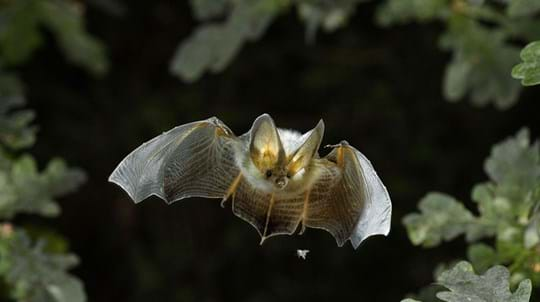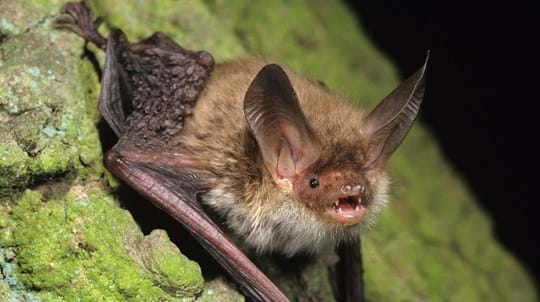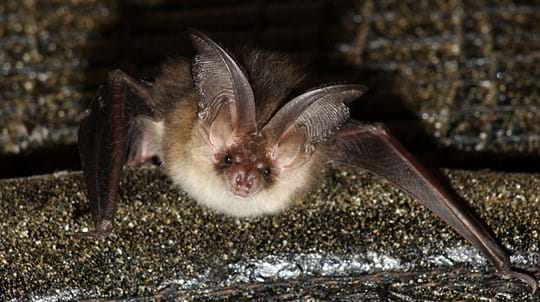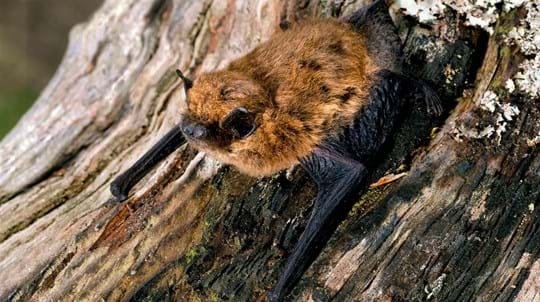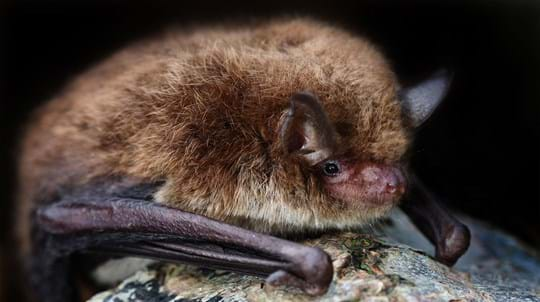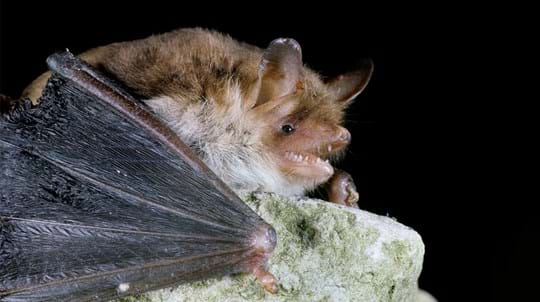
Credit: David Chapman / Alamy Stock Photo
Hibernation
The greater horseshoe bat hibernates in a winter roost from late autumn until around April. Exact timings depend on weather.
When approaching their resting point of choice, greater horseshoe bats somersault towards it, grasping the perch with their feet.








